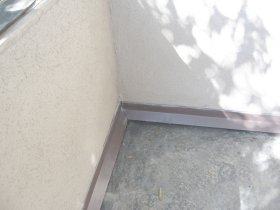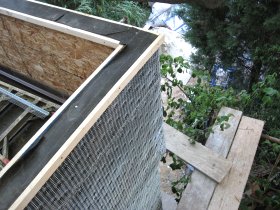Arlington, VA
for Nik Stajka


A gap is left between the membrane and the flashing for the flooring
Rubber membrane is covered with a layer of plastic, then masonite, to
prevent puncture. Mortar setting up and drying will even reduce the elasticity
or the membrane.
In other words it is better not to get any mortar on the membrane.









